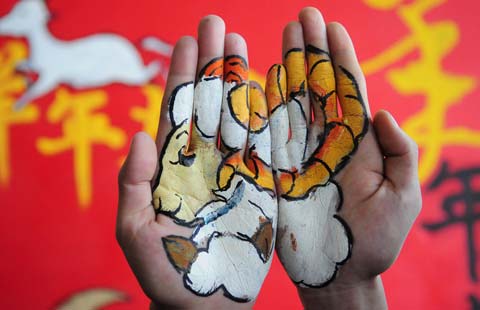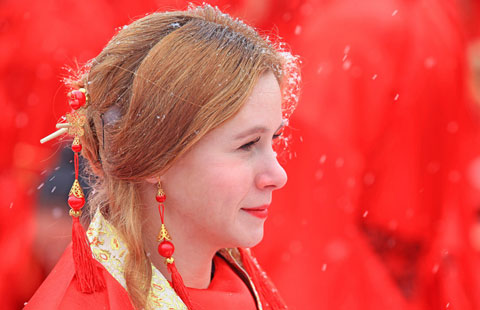Humble fields belie millennia of history at Taosi relics site
Updated: 2015-10-22 08:14
By Catherine Lai(China Daily)
|
||||||||
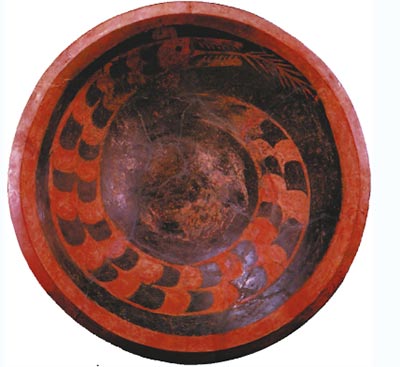 |
|
A color pottery plate with dragon pattern excavated at the Taosi ancient relics site. [Photo provided to China Daily] |
Editor's note: The Xiangfen county government has applied to the State Administration of Cultural Heritage for permission to build a national-level archaeological park on the Taosi ancient relics site.
Of all the places we visited in Shanxi, the one that made the biggest impression on me was the Taosi relics site. Who would have thought that a civilization that flourished thousands of years ago would lie beneath this province known for its coal production?
We stumbled off the bus to a formal welcome of several uniformed police officers standing to attention beside four electric golf carts. A wooden sign beside the road informed us in fresh gold characters that we were there to visit Taosi, or the clay temple. Looking around, we saw no temples but were surrounded by farmland sparsely interspersed by houses.
With only the sound of our chatter and the quiet whirring of the electric vehicles, we set off down the road between fields of faded greenery and cornhusks and arrived at a nondescript building where a woman stood wearing a microphone.
That is when things got interesting.
At the insistence of our guide, we went inside the dark building, wondering why we were there, and gathered around a model of tiny brown houses surrounded by shrubbery that resembled the dullness of the scenery outside, despite a string of LED lights. It was a model of the Taosi site, with labels marking the residential area of the nobility, the residential area of the commoners and the location of the observatory.
The simple model represents the site that some archaeologists argue was the capital of the legendary Emperor Yao, a mythical figure who most scholars believe to be fictional. According to Confucian texts, Yao was one of the sage emperors, a group of mythological rulers who existed before the Xia, commonly accepted as the first Chinese dynasty. The texts extol the virtues of these sage kings, who were supposed to have been paragons of benevolence and moral fiber.
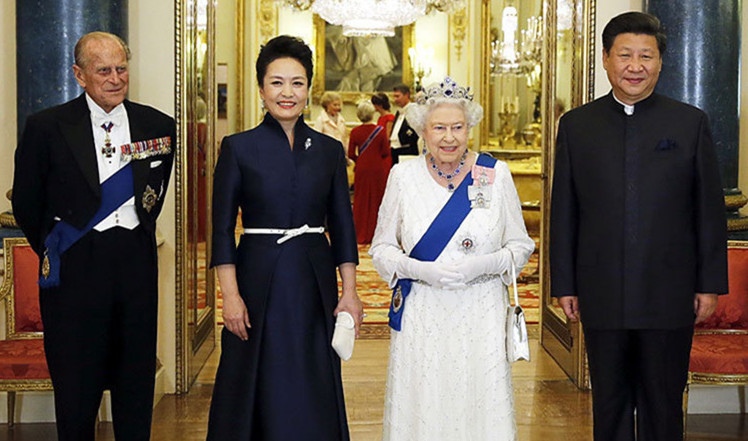
 Royal toast: Queen hosts state banquet for visiting Xi
Royal toast: Queen hosts state banquet for visiting Xi
 Xi and first lady visit British royal collections' Chinese items
Xi and first lady visit British royal collections' Chinese items
 Top 10 highlights in China-UK Year of Cultural Exchange
Top 10 highlights in China-UK Year of Cultural Exchange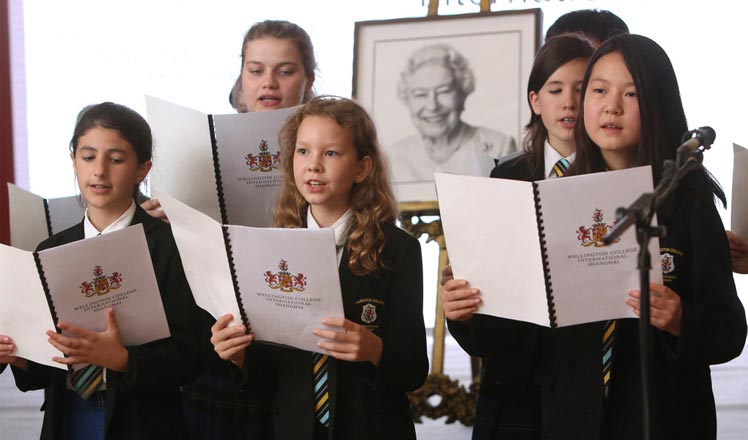
 British int'l schools in China
British int'l schools in China
 Top 10 M&A deals between China and UK
Top 10 M&A deals between China and UK
 29 similarities both countries share
29 similarities both countries share
 Deals signed, agreements in pipeline
Deals signed, agreements in pipeline
 'Amazing China' on London's cabs
'Amazing China' on London's cabs
Most Viewed
Editor's Picks

|

|

|

|

|

|
Today's Top News
Tu first Chinese to win Nobel Prize in Medicine
Huntsman says Sino-US relationship needs common goals
Xi pledges $2 billion to help developing countries
Young people from US look forward to Xi's state visit: Survey
US to accept more refugees than planned
Li calls on State-owned firms to tap more global markets
Apple's iOS App Store suffers first major attack
Japan enacts new security laws to overturn postwar pacifism
US Weekly

|

|


